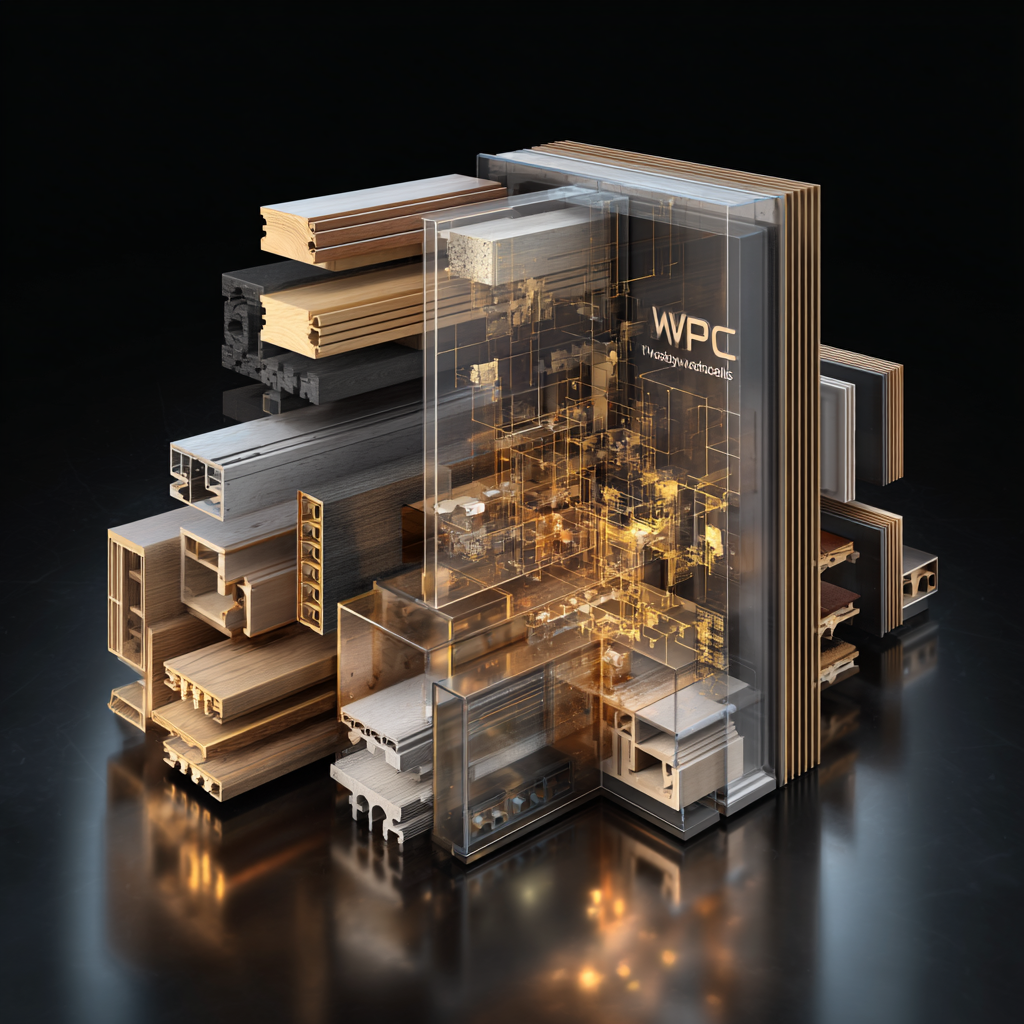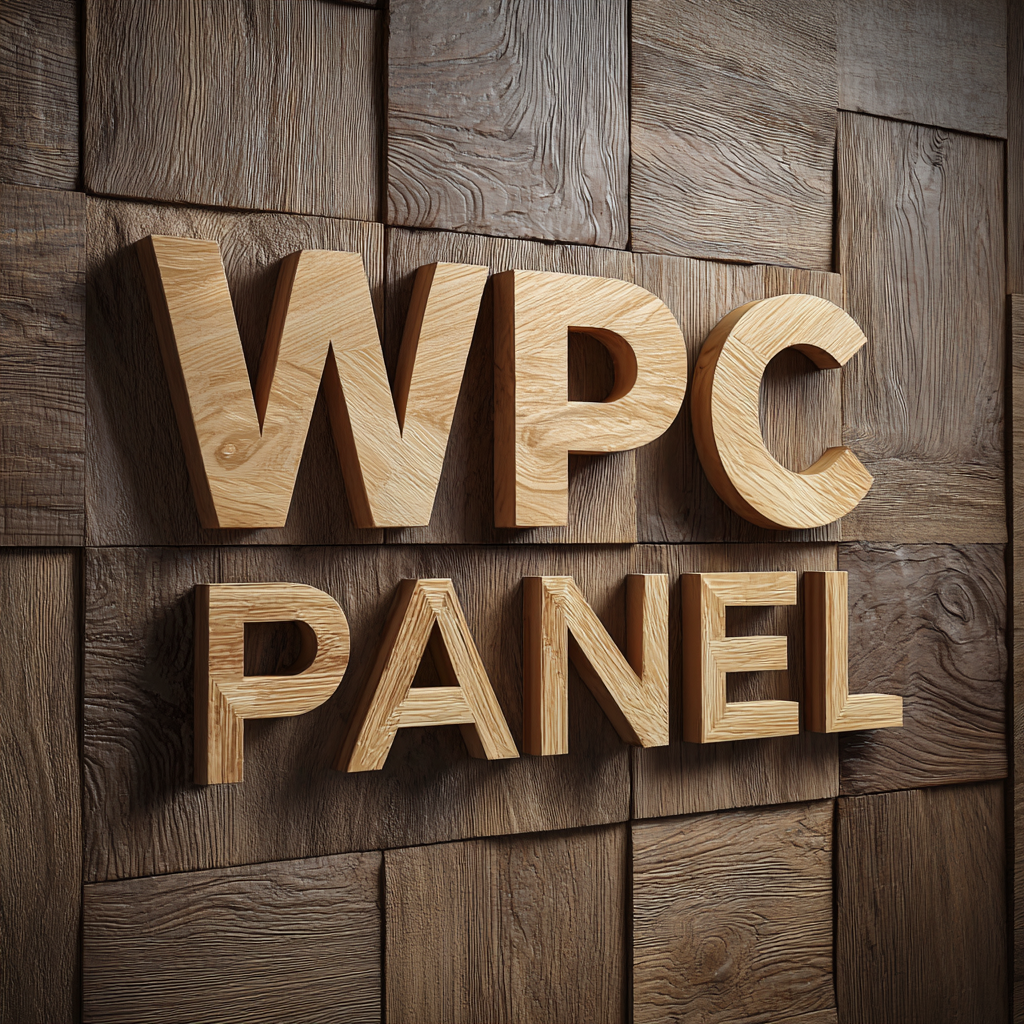Shandong Xiangying New Materials Technology Co., Ltd.
Shandong Xiangying New Materials Technology Co., Ltd.
As global demand for sustainable and innovative building materials continues to rise, the utilization of WPC (Wood Plastic Composite) panels has emerged as a game-changer in the construction and design industries. Reports indicate that the global WPC market is projected to reach USD 10.2 billion by 2024, growing at a CAGR of 12.5% from 2019 to 2024. This surge is primarily driven by WPC panels' eco-friendly properties, durability, and versatility, making them an attractive option for a variety of applications, from residential to commercial projects. China, as a leading manufacturer of WPC panels, has established a significant footprint in the international market, exporting these innovative products worldwide. This blog aims to explore some of the best WPC panel examples that have garnered attention among global buyers, highlighting their unique designs and applications that underscore China’s excellence in this burgeoning industry.

Wood Plastic Composite (WPC) panels have emerged as a prime choice for eco-conscious buyers, significantly due to their alignment with sustainability trends. According to the NAR 2023 REALTORS® & Sustainability Report, 87% of potential home buyers are willing to pay a premium for green features, such as WPC panels, that blend durability with environmental stewardship. WPC panels are made from recycled wood and plastic materials, making them an attractive option for both the residential and commercial sectors. Their resistance to rot and insects, along with low maintenance requirements, adds to their appeal, especially in regions focused on sustainable construction practices.
Tips for buyers: When considering WPC panels, look for those certified by environmental standards, which can ensure that the materials are sustainably sourced. Additionally, check for warranties that indicate the durability and longevity of the product, as higher quality often leads to long-term savings on repairs and replacements. Lastly, consider the aesthetic options available; many WPC panels mimic traditional wood finishes, providing versatility in design without compromising sustainability.
As societal norms increasingly favor green choices, understanding the key features and benefits of WPC panels positions global buyers to make informed decisions. These panels not only contribute to energy efficiency and reduced waste but also cater to the growing demand for sustainable living spaces.

In the WPC (Wood-Plastic Composite) industry, the significance of import and export certifications cannot be overstated. These certifications not only ensure product quality and compliance with international standards but also enhance marketability for global buyers. According to a recent report by the Global Industry Analysts, the WPC market is projected to reach USD 5.5 billion by 2027, driven by an increasing demand for eco-friendly materials. Certification can give suppliers a competitive edge, proving their commitment to quality, sustainability, and safety—factors that are increasingly prioritized by consumers.

When seeking WPC products from international suppliers, buyers should ensure their partners hold appropriate certifications such as CE, ISO 9001, and ASTM standards. These certifications act as a guarantee that the products meet specific regulatory requirements and performance benchmarks. Additionally, some countries may have local regulations that complicate the import process, making it crucial for buyers to work with certified suppliers who are familiar with these import/export norms.
Tip: Always verify the certification status of your suppliers before placing large orders to minimize risks associated with non-compliance. Furthermore, attending industry expos and trade shows can provide invaluable insights into emerging trends and help identify suppliers who meet certification standards.
In recent years, Wood-Plastic Composites (WPC) have gained immense popularity across various sectors, particularly in construction and interior design. The innovative designs seen in WPC panels are revolutionizing the way we perceive traditional materials, offering versatility and sustainability. One standout case study is from Scandinavia, where a company has developed WPC panels that replicate the appearance of natural wood while providing superior resistance to weather and wear. This dual benefit not only enhances aesthetic appeal but also extends the lifespan of outdoor structures.
Another remarkable example can be found in Asia, where designers are integrating WPC panels into modern architectural projects. A notable installation features intricate geometric patterns cut into panels that serve both functional and decorative purposes. These designs have transformed urban landscapes, highlighting how WPC materials can push the boundaries of creativity while maintaining environmental consciousness. By embracing such innovative approaches, global buyers can access cutting-edge WPC products that blend style, durability, and eco-friendliness, paving the way for the future of materials in construction and design.
When embarking on a project requiring wood plastic composite (WPC) panels, it's crucial to understand how to select the right options that align with your specific needs. The diversity of WPC materials available can be overwhelming, but assessing your project requirements will guide you toward the most suitable choice. Consider factors such as durability, aesthetic appeal, and environmental impact. These composites come in various textures and finishes, allowing you to achieve the desired look while benefiting from their resistance to weathering, insects, and decay.
Moreover, pay attention to the application of the panels. Whether you're building decking, fencing, or accent walls, the thickness, density, and formulation of the WPC panels will significantly influence performance and longevity. Researching potential suppliers and their reputations can provide further insight into the reliability of different products in the marketplace. With the global WPC market projected to grow steadily, investing time in choosing the best panels can enhance not only the visual quality of your project but also its sustainability and durability over time.
| Panel Type | Thickness (mm) | Dimension (mm) | Color Options | Usage | Estimated Cost ($/m²) |
|---|---|---|---|---|---|
| Wood Plastic Composite | 20 | 140x40 | Brown, Green, Tan | Decking, Fencing | 8.5 |
| WPC Wall Panels | 15 | 2000x300 | Gray, Beige, Red | Interior, Exterior Walls | 12.0 |
| WPC Ceiling Panels | 10 | 3000x200 | White, Charcoal, Light Blue | Ceilings, Indoor Decoration | 14.5 |
| WPC Garden Boards | 25 | 1500x150 | Natural, Dark Oak | Gardens, Pathways | 9.0 |
Navigating the regulatory landscape for Wood Plastic Composite (WPC) panels is crucial for global buyers looking to maintain compliance while capitalizing on market opportunities. As new standards emerge, such as the BIS Quality Control Orders set to take effect next month, businesses must be proactive in understanding the implications these regulations will have on their sourcing and manufacturing processes. According to industry reports, WPC panels are projected to grow at a CAGR of 12% through 2025, yet compliance with safety and quality regulations will be a determining factor in accessing diverse markets.
Tips for buyers include staying informed about local regulations, such as the 2018 Minimum Energy Efficiency standard for landlords, which requires properties to achieve an EPC rating of at least band E. Understanding these requirements can ensure smoother market entry and better acceptance among consumers. Additionally, investing in quality testing and certification for WPC panels not only aligns with compliance but also enhances product credibility and consumer trust.
Moreover, buyers should consider the specific requirements for different markets. For example, the implementation of new standards concerning wood-based materials will require thorough documentation and adherence to quality specifications, making it essential for global buyers to build relationships with reliable suppliers who understand local compliance norms. Keeping abreast of these changes will not only mitigate risks but also position buyers advantageously in a competitive landscape.
